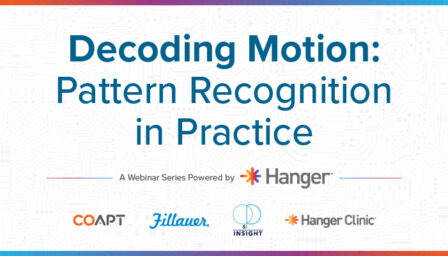Webinar: Restoring Mobility and Building a Patient-Focused Future Using Big Data

Date and Time
Location
Virtual Event
An Analysis of the Mobility Analysis of AmpuTees (MAAT) Studies for Therapists and O&P Providers
The prevalence of lower limb amputations in the United States continues to rise with a projected population of 3.6 million amputees by 2050, up from 1.6 million in 2005. Accompanying the rise in patients is a shift in healthcare policies that place increased emphasis on patient-centered outcomes as they relate to prosthetic mobility. While prosthetic rehabilitation has traditionally focused on restoring functional mobility, there is now a need to go beyond that and better understand the impact of improved mobility holistically.
The MAAT studies seek to delve into that impact and clarify the concept of prosthetic mobility as it relates to such considerations as satisfaction, quality of life, comorbid health conditions, and prosthetic component choices. Join us as Clinical Education Specialist, Erin O’Brien, CPO, FAAOP, discusses how these studies can provide insight to those who care for limb loss patients around the country.
Objectives
Upon completion of this program, participant will be able to:
- Review relevant and current prosthetic rehabilitation concepts as they relate to each study
- Leverage measured outcomes and studies to benefit and better understand patient communities
- Identify the impacts of satisfaction, quality of life and prosthetic componentry
Watch the Recording
Instructor

Erin O’Brien, CPO, FAAOP
Erin specializes in care for pediatric patients and for patients with upper limb amputation or limb deficiency. Her time is currently split between clinic and the Department of Clinical and Scientific Affairs, where she works on research projects to improve patient outcomes
Continuing Education Requirements: All attendees are required to attend the entire session, complete a credit request form, and evaluation following the session. Throughout the presentation learning outcomes will be assessed through instructor interaction and attendee’s participation through Q&A.
Related Events

July 30, 2025
From Code to Care: Expanding Access to Pattern Recognition in Upper Limb Prosthetics
This session provides critical insights into Healthcare Common Procedure Coding System L6700, a newly approved reimbursement code representing the integration of myoelectric pattern recognition within an upper limb prosthesis.

August 27, 2025
Foundations of Pattern Recognition: Principles, Evidence, and Patient Candidacy
This course introduces therapists to emerging care strategies for individuals following upper limb amputation, with a focus on integrating pattern recognition technology into rehabilitation.